Hello lovelies! Today, I’ll talk about vintage beauty in this new article. If you’re new to it, this is your ultimate guide to vintage beauty!
Before all, you must know this fact: vintage beauty is more than just an aesthetic. Indeed, it’s a celebration of timeless elegance. Also, it’s a nod to the sophistication of eras gone by, and an exploration of beauty rituals that have withstood the test of time. Just look at Jackie Kennedy who still inspires many First Ladies, including Melania Trump!
Do you like the glamour of the 1920s flapper era? Or do you prefer the polished poise of 1950s Hollywood starlets? Maybe you love the bohemian vibes of the 1920s? Whatever era you’re drawn to, vintage beauty has always something to offer for everyone.
In this ultimate guide to vintage beauty, I’ll walk you through the essentials of vintage beauty. In particular, I’ll cover iconic looks, makeup techniques, skincare routines, and hairstyling tips. If you want to embrace and recreate all these beautiful classic styles, I’ll got you covered in this guide!
Disclaimer: This post contains affiliate links to help me support this blog. I may earn a commission whenever you click on the links and purchase the products, with no additional cost to you. Thanks in advance for your support!
Understanding Vintage Beauty
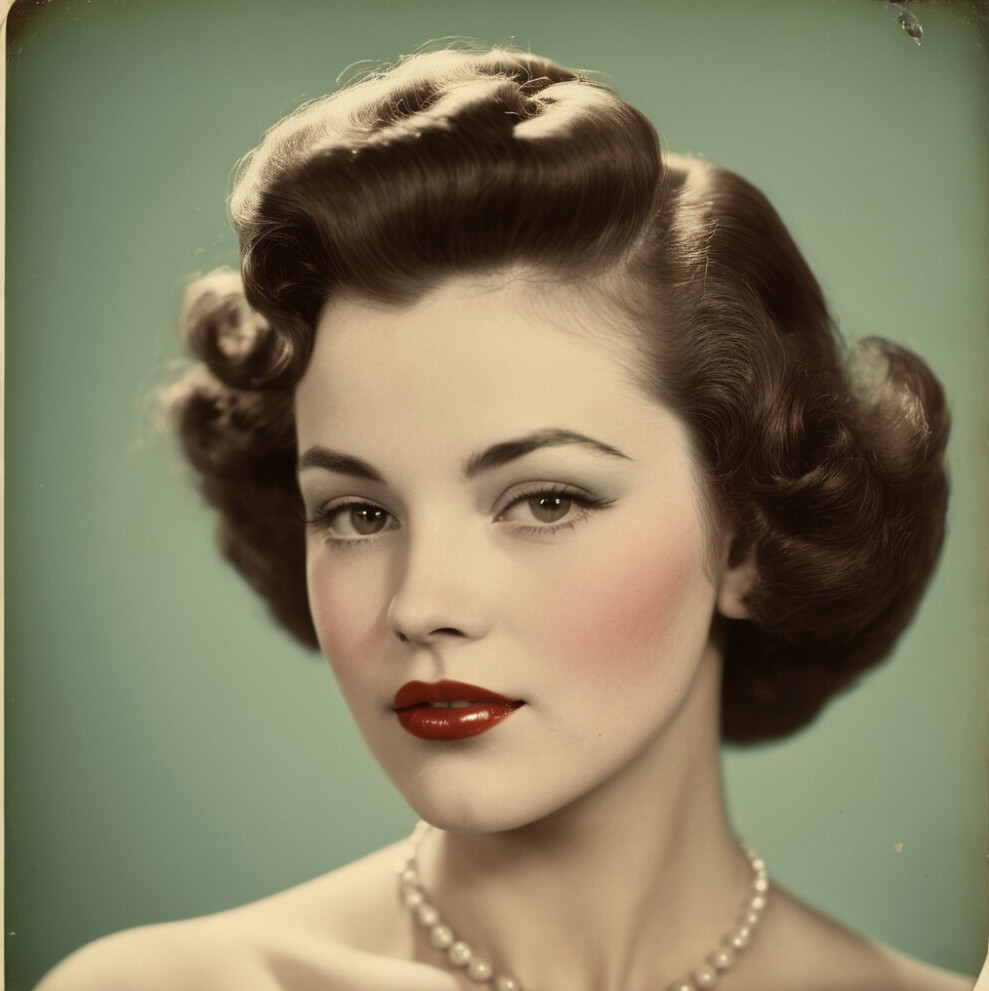
Vintage beauty refers to the styles and practices associated with specific historical periods, typically from the 1920s to the 1980s. Each decade brought its own unique trends influenced by cultural shifts, fashion, and technological advancements in beauty products.
- 1920s: The Jazz Age was all about bold, dramatic looks. Think dark, kohl-rimmed eyes, pencil-thin eyebrows, and deep red or plum lips. The main icons were Clara Bow and Louise Brooks.
- 1930s: A softer, more refined version of the 1920s style emerged, with arched brows, lighter eye makeup, and glossy lips.
- 1940s: Wartime practicality influenced beauty trends. Women favored natural, clean looks with red lipstick as a symbol of resilience.
- 1950s: This decade is the epitome of glamour with icons like Marilyn Monroe and Jane Russell. Cat-eye eyeliner, voluminous lashes, and perfectly coiffed hair defined the era.
- 1960s: Mod culture brought graphic eyeliner, bold eyeshadows, and pale lips. Twiggy’s exaggerated lashes became an iconic look.
- 1970s: A mix of natural beauty and disco glam. Earthy tones, bronzed skin, and shimmering eyeshadows were popular. Diana Ross is a perfect example of this wonderful era.
- 1980s: Bold and colorful with heavy blush, bright eyeshadows, and statement lip colors. Think Madonna and Cyndi Lauper.
Vintage Beauty in the 1920s: Glamour and Rebellion

The emergence of the “flapper”
The 1920s are often referred to as the Roaring Twenties. Indeed, it was a decade marked by dramatic social, cultural, and political changes that reverberated through fashion and beauty.
Moreover, this era of glamour and rebellion was characterized by the emergence of the “flapper,. The flapper was a bold, modern woman who defied traditional norms with her short hair, daring fashion choices, and liberated lifestyle. She came in complete opposition to the Gibson Girl, who was the plump and feminine role model of the end of the 19th century and the beginning of the 20th century.
Beauty trends of the 1920s reflected this spirit of defiance and exuberance. For instance, women embraced a more androgynous look, with sleek bobbed haircuts and makeup that emphasized strong, dramatic features.
Makeup in the 1920s
Also, dark, kohl-rimmed eyes created a smoky, mysterious allure, while thin, highly arched eyebrows were meticulously drawn to convey sophistication. The iconic cupid’s bow lips, painted in deep reds, plums, and even daring shades of black, became a symbol of the era’s fearless femininity.
The beginning of the mass-market cosmetics industry
The widespread use of cosmetics became a form of rebellion against previous generations’ modesty. Thus, women openly applied makeup in public, a previously taboo act. Also, this was the golden age of jazz and cinema, with silver screen icons like Clara Bow and Louise Brooks setting beauty standards that women eagerly emulated.
The rise of consumer culture and mass production made beauty products more accessible. Consequently, this allowed women from various backgrounds to participate in this glamorous revolution.
The need for independence and individuality
But the 1920s wasn’t just about surface aesthetics. Rather, it was a reflection of women’s growing independence, their desire to express individuality, and the breaking away from Victorian constraints. For all these reasons, I particularly enjoy this era, because it means more freedom for women, as well as the fact that you should take care of your beauty habits.
The beauty trends of this decade continue to inspire modern fashion and makeup. Indeed, they symbolize an era where glamour met rebellion in the most captivating way.
Vintage Beauty in the 1940s: Resilience and Sophistication
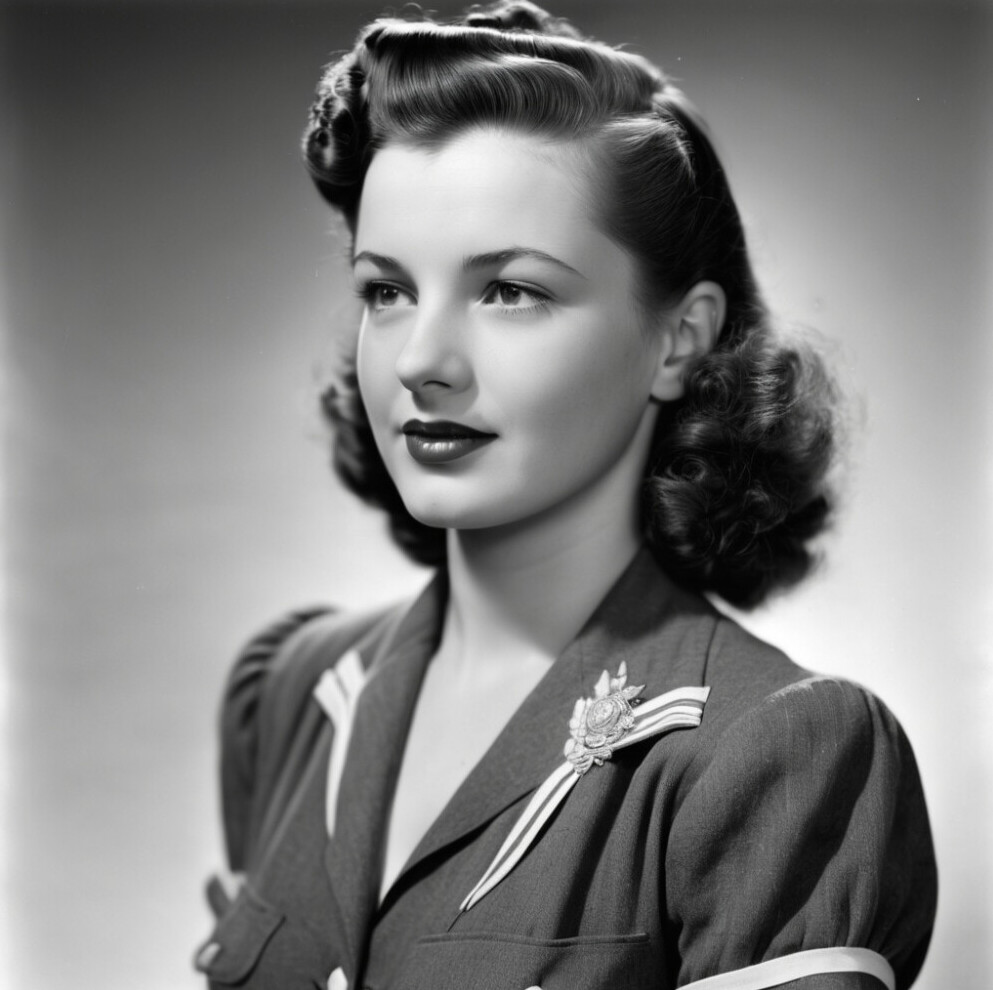
The 1940s were defined by resilience and sophistication, shaped by the impact of World War II.
Indeed, despite the challenges of wartime rationing and limited resources, women found creative ways to maintain their beauty and elegance. The “make-do and mend” mentality extended to fashion and cosmetics. And it emphasized practicality without compromising style.
Hairstyles in the 1940s
Hairstyles became more structured and polished, with victory rolls and pin curls symbolizing both femininity and strength. Moreover, women often styled their hair at home. They used innovative techniques to achieve glamorous looks despite shortages of salon services and hair products.
Also, scarves and turbans became popular. Why? Because they served both as fashion statements and practical solutions for women working in factories to support the war effort.
Makeup trends in the 1940s
Makeup in the 1940s focused on a polished and natural appearance. For instance, red lipstick became a patriotic symbol, with shades like “Victory Red” boosting morale and embodying the spirit of determination.
Also, defined brows, subtle eyeshadow, and minimal rouge complemented the bold lip color. All these elements together contributed to create a timeless and sophisticated look.
Fashion statements in the 1940s
During this era, fashion reflected the constraints of wartime. Therefore, tailored suits, knee-length skirts, and utilitarian fabrics became the norm. However, women added personal touches through accessories and careful attention to detail. Thus, they showcased their resilience and adaptability during difficult times.
To sum up, the 1940s beauty trends highlighted the strength and grace of women navigating challenging times. Moreover, this era demonstrated that even in adversity, elegance and self-expression remained powerful forms of identity and empowerment for women.
Vintage Beauty in the 1950s: Elegance and Femininity
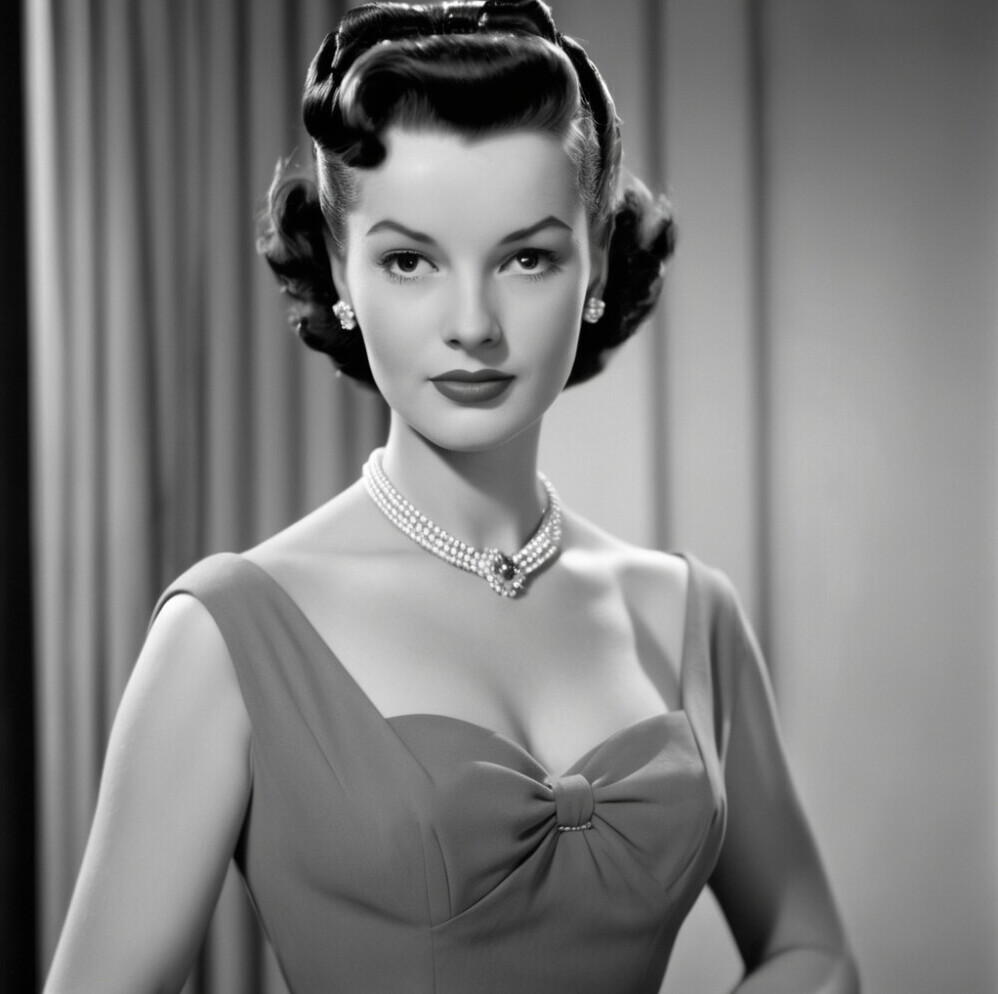
The 1950s ushered in an era of elegance and heightened femininity, influenced by post-war optimism and the desire to return to traditional values. Therefore, this decade celebrated polished looks. Also, it especially emphasized hourglass silhouettes, graceful hairstyles, and sophisticated makeup.
Moreover, the fashion and beauty trends of the 1950s reflected a blend of glamour and domestic idealism. Thus, women embraced their roles both at home and in society with style and poise.
Hairstyles in the 1950s
Hairstyles in the 1950s were meticulously styled and voluminous. Indeed, soft curls, elegant updos, and perfectly coiffed bouffants defined the era. Also, they were often enhanced with hair accessories like ribbons and decorative combs. The influence of Hollywood icons such as Marilyn Monroe, Grace Kelly, and Audrey Hepburn set beauty standards that emphasized classic, timeless appeal.
Makeup trends in the 1950s
During this decade, makeup was characterized by a flawless and radiant complexion. Indeed, women favored matte foundations, subtle contouring, and a healthy flush of color on the cheeks.
As for eyebrows, they were well-groomed and arched, framing the eyes, which were accentuated with winged eyeliner and soft, neutral eyeshadows.
Moreover, the signature red lipstick remained a staple because it symbolized both confidence and femininity. However, other lipstick shades started gaining popularity such as pink and coral.
Fashion statements in the 1950s
Personally, I really prefer the fashion of the 1950s! Indeed, fashion of that era highlighted the hourglass figure, with cinched waists, full skirts, and fitted bodices. All these elements created a silhouette of refined elegance that still inspires women today.
Also, the “New Look” popularized by Christian Dior emphasized femininity and luxury, with an abundance of fabric and intricate detailing. Women accessorized their outfit with pearls, gloves, and chic handbags. All these accessories contributed to complete their sophisticated ensembles.
To sum up, the beauty trends of the 1950s embodied a return to classic femininity and grace. Moreover, this era showcased the power of polished, well-curated styles. Thus, it left a lasting legacy of timeless elegance in the world of fashion and beauty.
Vintage Beauty in the 1960s: Revolution and Individuality
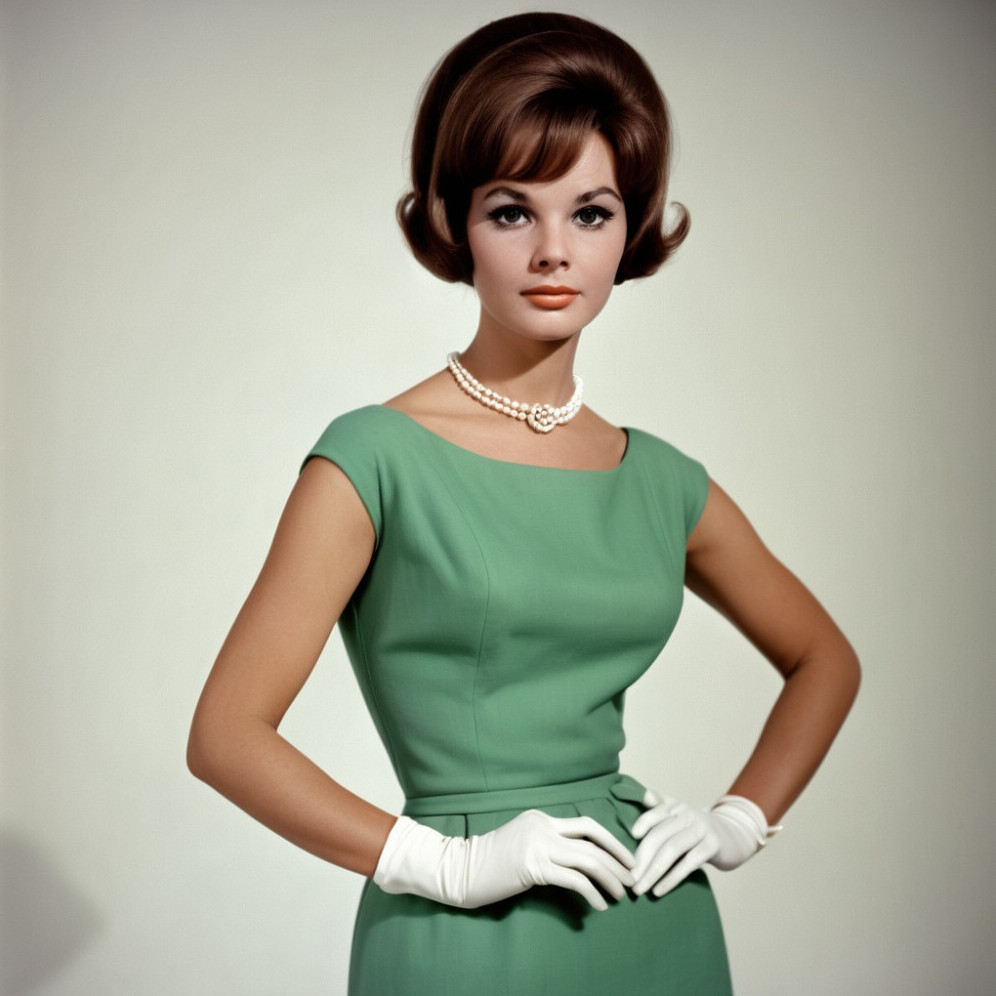
The 1960s were a transformative decade marked by revolution and individuality, reflecting the social and cultural upheavals of the time.
Indeed, that era saw a dramatic shift in beauty and fashion, with bold experimentation and a break from traditional norms. Influenced by the youth-driven counterculture, the civil rights movements, and the rise of rock ‘n’ roll, the 1960s celebrated self-expression and non-conformity.
Hairstyles in the 1960s
Hairstyles varied widely. Indeed, you had the sleek, geometric cuts popularized by Vidal Sassoon. But you also had the voluminous bouffants and beehives sported by icons like Brigitte Bardot.
Moreover, the mod look, epitomized by British model Twiggy, featured short, pixie haircuts and a boyish charm that defied conventional femininity. However, long, natural hair with a center part also became a symbol of the free-spirited hippie movement.
As you can see, there were lots of hairstyles for every taste in the 2960s. You just had to find what worked for you!
Makeup trends in the 1960s
Like hairstyles, makeup in the 1960s was equally diverse and experimental. For instance, the mod style emphasized dramatic eyes with heavy black eyeliner, bold lashes, and white or pastel eyeshadows to create a doll-like effect. Also, false eyelashes became a staple, enhancing the wide-eyed look.
But in contrast, the hippie aesthetic favored a more natural approach, with minimal makeup, earthy tones, and a focus on natural beauty. Once again, you just had to find your tribe and what worked the most on you!
Fashion statements in the 1960s
Fashion in the 1960s was revolutionary, breaking away from the conservative styles of previous decades. Indeed, the miniskirt, introduced by designer Mary Quant, became an iconic symbol of youthful rebellion and liberation. And I can tell you that Coco Chanel didn’t like it at all because she thought that showing your knees was disgusting and disgraceful!
Also, bold patterns, bright colors, and eclectic combinations defined that era’s eclectic fashion sense. Accessories like oversized sunglasses, go-go boots, and statement jewelry completed the avant-garde looks.
To sum up, the 1960s were a celebration of freedom, creativity, and self-expression. This era’s beauty trends reflected the diverse cultural influences and the desire to challenge traditional norms, leaving a lasting impact on the evolution of fashion and beauty.
Vintage Beauty in the 1970s: Natural Beauty and Disco Glam

The 1970s were a dynamic decade of contrasting beauty trends. Indeed, that era celebrated both natural aesthetics and the dazzling allure of disco glam.
Also, that era reflected the diverse cultural movements of the time, such as the earthy, free-spirited vibes of the hippie culture; or the bold, flamboyant energy of the disco scene.
Moreover, individuality and self-expression were at the heart of 1970s beauty, as people embraced a wide range of styles that suited their personalities.
Hairstyles in the 1970s
Hairstyles in the 1970s ranged from natural, flowing locks to sculpted, voluminous styles. For example, the bohemian influence inspired long, straight hair with a center part, often adorned with braids, beads, or headbands.
In contrast, the disco era brought big, bold hairstyles with lots of volume, such as the iconic feathered look popularized by Farrah Fawcett. Moreover, afros became a powerful symbol of cultural pride and identity within the Black community. Just think of Diana Ross or the Jackson 5!
Makeup trends in the 1970s
Makeup trends also mirrored the duality we already saw in the hairstyles. Indeed, the natural look emphasized dewy skin, minimal foundation, and earthy tones for eyeshadows and lip colors. Neutral shades, bronzed cheeks, and a fresh, healthy glow defined the boho aesthetic.
Conversely, disco glam embraced dramatic, shimmering makeup with bold eyeshadows in metallic hues, glitter accents, and glossy lips. Thus, eyeliner was used creatively to enhance eye shapes, while false lashes added extra drama for a night out under the disco ball.
Fashion statements in the 1970s
Fashion in the 1970s was equally diverse. Indeed, that era featured flowing maxi dresses, bell-bottoms, fringe, and ethnic-inspired prints for the bohemian style.
Moreover, the disco craze introduced glitzy outfits with sequins, jumpsuits, and platform shoes that sparkled on the dance floor. Accessories like oversized sunglasses, chunky jewelry, and wide belts completed the eclectic looks.
To sum up, the 1970s celebrated freedom of expression through beauty and fashion, blending natural charm with glamorous flair. This decade’s trends continue to inspire modern styles, as it reflects a timeless love for individuality and bold creativity.
Vintage Beauty in the 1980s: Bold and Colorful
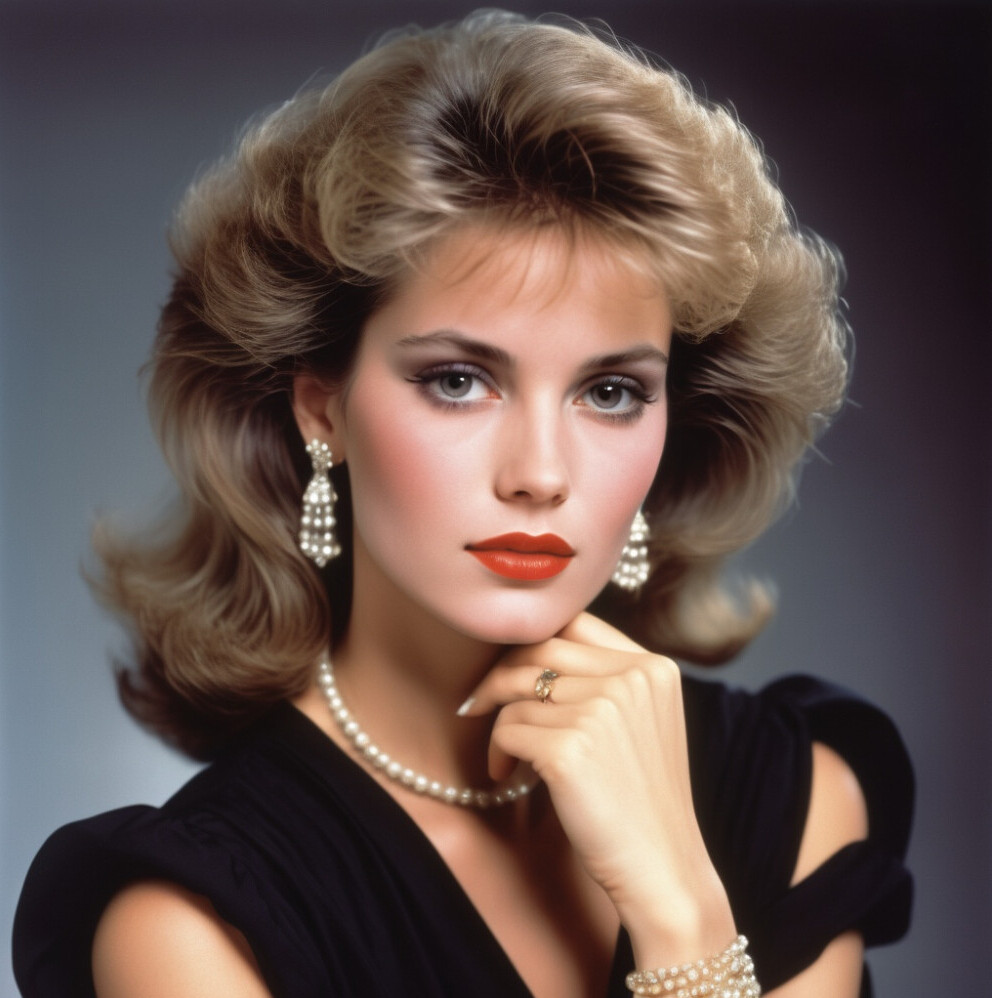
As a child of the 1980s, I can definitely tell you that the era was defined by boldness, excess, and vibrant self-expression!
Indeed, this decade embraced a “more is more” philosophy, with beauty and fashion trends that were unapologetically loud, colorful, and dynamic. Influenced by pop culture icons, music videos, and the rise of MTV, the 1980s celebrated individuality through dramatic looks and fearless experimentation.
Hairstyles in the 1980s
Hairstyles were big, voluminous, and gravity-defying. For example, teased hair, crimping, and perms were all the rage. Often, they were enhanced with bold hair colors like platinum blonde, electric blue, and bright pink.
Moreover, the mullet, high ponytails with scrunchies, and side-swept bangs became iconic styles. They reflected the playful spirit of the era. Celebrities like Madonna, Cyndi Lauper, and David Bowie pushed boundaries with their eclectic and trendsetting hair choices.
Makeup trends in the 1980s
Makeup was equally audacious. Indeed, it was characterized by vivid colors and strong contrasts. Bright eyeshadows in electric blue, fuchsia, and neon green were applied generously, often extending beyond the eyelids.
Also, bold eyeliner, heavy mascara, and defined brows added to the dramatic eye look. Women applied blush prominently, with shades of pink and coral giving a sculpted, angular appearance. And lip colors ranged from deep reds to shocking pinks and oranges, completing the daring aesthetic.
Fashion in the 1980s
Fashion in the 1980s was equally eclectic and expressive. Indeed, power dressing with shoulder pads, oversized blazers, and bold prints reflected the era’s confidence and ambition.
But at the same time, lycra, leg warmers, and off-the-shoulder tops defined the fitness craze. On the other hand, punk-inspired styles featured leather jackets, ripped jeans, and studded accessories. Also, statement jewelry, including chunky necklaces, large hoop earrings, and colorful bangles, added the finishing touch.
To sum up, the 1980s were all about embracing boldness and breaking traditional fashion rules. That decade’s vibrant, fearless approach to beauty and style continues to influence contemporary trends.
That era knew how to celebrate the joy of self-expression and individuality. Also, it seems to be the completeness of the 1920s, where women started to express themselves through their look.
Vintage Beauty Secrets: Timeless Tips & Tricks

Vintage beauty secrets offer timeless tips and tricks that continue to inspire modern beauty routines.
One key principle across decades is the importance of skincare. Indeed, classic icons like Audrey Hepburn and Marilyn Monroe emphasized cleansing, moisturizing, and protecting the skin to achieve a radiant complexion.
Moreover, red lipstick remains a timeless statement, instantly adding glamour and confidence to any look. Winged eyeliner, popularized in the ’50s and ’60s, continues to be a chic way to define the eyes.
Also, hair care features enduring techniques, such as setting curls with pin curls or rollers for lasting volume. Additionally, natural ingredients like cold cream, rosewater, and coconut oil have been beauty staples for generations. Thus, these products proved that simple, effective products could stand the test of time. Don’t hesitate to read my article on the five essential vintage beauty tools to learn more about them.
Embracing vintage beauty secrets means that you appreciate the elegance of the past, while incorporating their enduring charm into your contemporary routines.
Finding Your Own Vintage Beauty Style

Do you want to know what vintage beauty style suits you? Good! But you should know something first; finding your vintage beauty style is a personal journey.
And that journey blends self-expression with inspiration from the past. I advise you to start by exploring different eras to identify which aesthetic resonates with you. It could be the glamorous flapper look of the 1920s, the polished sophistication of the 1950s, or the bold vibrancy of the 1980s.
Afterwards, consider your natural features and how various vintage styles can enhance them—bold red lips, cat-eye eyeliner, or voluminous curls might highlight your unique beauty. Don’t hesitate to experiment with makeup techniques, hairstyles, and fashion pieces from different decades to discover what feels authentic and comfortable.
Also, incorporate vintage elements gradually into your routine. You may blend them with modern touches to create a look that’s uniquely yours. Don’t be afraid to mix influences. Indeed, combining styles from multiple eras can result in a fresh, personalized aesthetic. There’s no need to cosplay an entire era if you don’t add your personal touch that shows your unique personality!
Ultimately, vintage beauty is about celebrating timeless elegance while expressing your individuality. Moreover, it should allow you to embrace the charm of the past with confidence and creativity.
Celebrating Diversity in Vintage Beauty

You are Black, Asian, Hispanic, Native American and want to embrace vintage beauty? Then, don’t be afraid to do so!
Indeed, I believe that celebrating diversity in vintage beauty involves recognizing and honoring the rich tapestry of styles, cultures, and influences that have shaped beauty standards across different eras.
Of course, White mainstream beauty icons like Marilyn Monroe or Audrey Hepburn often dominated the spotlight. Let’s not be blind about that fact. But you have countless diverse figures who contributed to the evolution of vintage aesthetics.
From Josephine Baker’s mesmerizing stage presence in the 1920s to Diahann Carroll’s sophisticated elegance in the 1960s, beauty has always transcended cultural boundaries.
Embracing diverse vintage beauty means acknowledging the unique hairstyles, makeup trends, and fashion statements from various ethnic backgrounds. This includes traditional African hairstyles, vibrant South Asian adornments, and the refined grace of East Asian beauty rituals.
Additionally, vintage beauty isn’t confined to a singular gender narrative. Indeed, many trailblazers from the LGBTQ+ community also challenged and redefined beauty norms. Nowadays, celebrating this diversity encourages a more inclusive appreciation of vintage styles, inspiring individuals to explore and honor the multifaceted history of beauty.
By recognizing these contributions, we surely pay homage to the past. However, we also foster a richer, more authentic representation of vintage beauty in our contemporary culture. And I find it personally exciting!
Redeeming Vintage Beauty: Sustainable Practices

Vintage beauty offers a unique opportunity to embrace sustainable practices within our beauty routines.
Indeed, by choosing vintage cosmetics and tools, we actively participate in reducing waste and minimizing our environmental impact. For instance, vintage beauty products often come in refillable or reusable packaging, reducing the need for single-use plastics.
Additionally, many vintage cosmetics were formulated with natural ingredients. Thus, you may avoid the harmful chemicals and toxins commonly found in modern products.
Beyond the environmental benefits, vintage beauty also promotes a slower, more intentional approach to self-care. When you take the time to carefully select and apply vintage cosmetics, it will encourage mindfulness and appreciation for the craftsmanship and quality of these products.
Therefore, this mindful approach can extend to other areas of our lives, fostering a more sustainable and conscious lifestyle. Embracing vintage beauty is not just about aesthetics. Indeed, it’s also a commitment to sustainability, self-care, and a more mindful way of living.
My Recommendations to Start Your Own Journey in Vintage Beauty
If you want to start your own journey with vintage beauty, you don’t necessarily know where to start. Here are two wonderful books that I used for my own journey:
Vintage Secrets: Hollywood Beauty by Laura Slater
Vintage Beauty Parlor: Flawless Hair and make-up in iconic vintage styles by Hannah Wing
The Little Book of Marilyn: Inspiration from the Goddess of Glam by Michelle Morgan
Your Beauty Mark: The Ultimate Guide To Eccentric Glamour by Dita Von Teese
Conclusion on our Beginner’s Vintage Beauty Guide: A Journey Through Glamour, Creativity, and Self-Expression

Vintage beauty is a delightful journey into the past, offering endless opportunities to explore and express yourself.
Whether you’re captivated by the boldness of the 1920s, the elegance of the 1950s, or the free-spiritedness of the 1970s, there’s a vintage style that resonates with everyone.
Just embrace the process, and experiment with different looks. But most importantly, have fun while you celebrate the timeless allure of vintage beauty!
Well, that’s all for today! What do you think of my beginner’s guide to vintage beauty? What’s your favorite vintage beauty era? Feel free to share in the comments below!
Take care, lovelies!
Want more content from me? Join my newsletter today and receive the latest updates of my website. Also, you’ll receive a wonderful gift in your email!
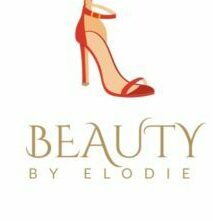

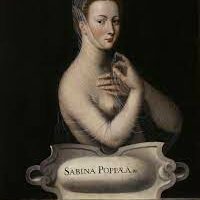
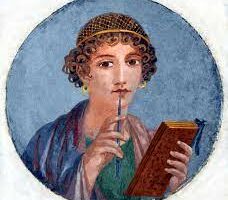
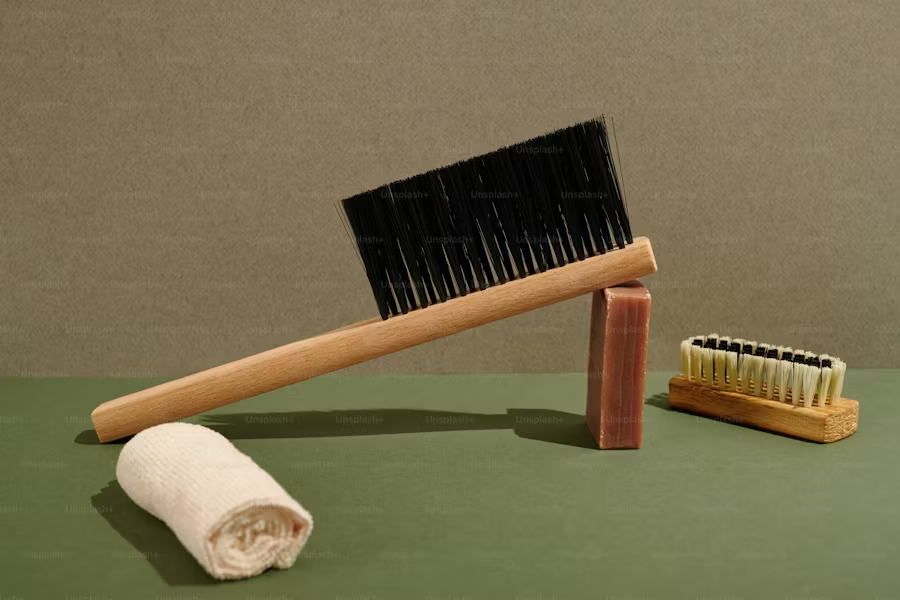
Hey, Elodie,
This is a comprehensive and well-written guide to vintage beauty! You’ve covered a lot of ground, from the historical context of each decade to practical tips and tricks for achieving these classic looks. It’s the best way to share ideas and experiences with your readers. I would love to come back for some more.
I particularly appreciate the effort to celebrate diversity within vintage beauty, highlighting icons and styles from various cultures and backgrounds. The inclusion of personal anecdotes and your own enthusiasm makes the article engaging and relatable.
I am not a fan for beauty, but your writing (and images) makes me feel the words and the fact that beauty is a natural thing that can only be enhanced. Thank you for sharing your thoughts and experiences.
John
Thanks John !
Vintage beauty is such a fascinating blend of history and self-expression! I love how each era reflects not just changing fashion but the cultural mindset of the time—like the rebellious spirit of the 1920s flappers or the resilience of 1940s women. Do you think modern beauty trends will ever have the same lasting influence? Also, with so many vintage styles to choose from, how do you decide which one suits you best?
Hello Zachary! Unfortunately, I don’t think that our era will influence the world of beauty and fashion that much because we basically recycle the old 20th century trends! To discover which era suits you the most, you must know yourself and your personality. Then, try several styles of aesthetics to determine what works the most for you. Hope that this helps and thanks for your comment!
This article is such a wonderful deep dive into the timeless charm of vintage beauty! I love how you’ve highlighted the unique styles across different decades. I do have a question—what’s the best way for beginners to find authentic vintage beauty products or recreate these looks using modern, safer alternatives? I’ve personally tried incorporating some 1950s elements like winged eyeliner and bold red lips, and it’s such a confidence boost! However, vintage hairstyles like victory rolls have always been a challenge for me. Do you have any tips or recommendations for achieving those classic styles without needing a professional? Also, I’d love to hear your take on which vintage era you think will have the biggest comeback in modern beauty trends. Personally, I’m rooting for the 1940s because of how resilient and iconic their styles were!
I reserve this information for another post on vintage beauty. Stay tuned!
This article, “A Beginner’s Guide to Vintage Beauty,” is an engaging and well-researched exploration of timeless beauty trends that continue to captivate fashion and makeup enthusiasts today. The author does an excellent job of walking readers through the evolution of beauty across different decades, illustrating how cultural, social, and political shifts influenced women’s aesthetics.
One of the standout aspects of this guide is its detailed breakdown of each era, from the rebellious flapper style of the 1920s to the bold and colorful aesthetic of the 1980s. The inclusion of historical context enhances the reader’s understanding of how beauty trends were shaped by the times. For example, the article highlights how the economic struggles and wartime efforts of the 1940s led to a more practical yet sophisticated look, while the post-war optimism of the 1950s ushered in an era of heightened femininity.
Moreover, the emphasis on individuality and self-expression is particularly inspiring. The encouragement to mix and match vintage styles with modern elements helps make vintage beauty accessible to everyone, regardless of their personal style or background.
Additionally, the discussion of inclusivity in vintage beauty is refreshing and necessary. Eurocentric standards have historically dominated beauty trends, but the acknowledgment of diverse influences and the encouragement for people of all backgrounds to embrace vintage aesthetics are commendable.
The article could benefit from even more practical advice on how to incorporate vintage beauty into everyday routines. While the historical insights are fascinating, readers might appreciate step-by-step guides or product recommendations that align with each era’s iconic looks.
Overall, this guide is an excellent introduction to vintage beauty, offering historical depth, aesthetic inspiration, and a celebration of timeless elegance. It successfully conveys the message that beauty is not just about trends but also about self-expression and cultural heritage.
Thanks for the comment!
Hi,
Your blog post “A Beginner’s Guide to Vintage Beauty” offers a captivating journey through the evolution of beauty trends from the 1920s to the 1980s. It’s fascinating to see how each decade’s cultural shifts influenced makeup and fashion styles.
Reflecting on personal experiences, I’ve always been drawn to the elegance of the 1950s. Attempting Marilyn Monroe’s iconic cat-eye and red lip look was both challenging and rewarding. It made me appreciate the precision and artistry involved in vintage makeup techniques.
This leads me to wonder about the accessibility of authentic vintage beauty products today. Are there modern brands that replicate these classic formulas, or is it better to seek out original products? Additionally, how can one adapt vintage hairstyles to suit contemporary hair types and lengths?
Engaging in discussions about vintage beauty not only honors past aesthetics but also provides inspiration for modern interpretations. It’s a delightful way to blend history with personal style.
Thank you!
Hello Fleeky, thanks for your comment ! Regarding your questions, please note that other articles on vintage beauty are on the way so stay tuned !
This was such a fascinating read! I love how you highlighted the evolution of beauty trends across different decades, showing how each era had its own unique influence. I’ve always been drawn to the classic elegance of the 1950s—there’s something so timeless about the polished looks and red lips! Have you tried recreating any specific vintage makeup looks yourself? I’d love to hear your experience with it! Also, do you think any of these trends are making a strong comeback in today’s beauty world?
Thanks for your comment Herman! For me, I’m all about the 1950s look as well; I really like the chic and timeless elegance of that era…
Hey! This was a fun read! The way the article traced beauty trends through different decades really highlighted how fashion and makeup are always evolving reflections of society. The 1920s flapper era, in particular, stood out—it wasn’t just about style but also about breaking free from rigid norms. The bobbed hair, bold lips, and defiant attitude? Iconic. It’s cool to see how that rebellious energy still influences beauty today. Also, love that the article acknowledges diversity in vintage beauty—because glamour has never been one-size-fits-all. I really enjoyed it .Thank you.
You’re welcome! I really appreciated your comment!
Your article beautifully explores the evolution of vintage beauty through the decades! I love how you’ve interwoven history and fashion, making it both educational and entertaining. It’s fascinating to see how societal shifts, cultural milestones, and even technological advancements influenced beauty trends.
For instance, I found the discussion about the bold makeup of the 1920s particularly intriguing. It’s amazing how women embraced their individuality and freedom post-World War I. Similarly, the nod to the natural elegance of the 1970s resonated with me. It’s a reminder of how trends often reflect the collective mindset of the time.
Also, I’m curious if you could relive a decade solely based on its beauty trends, which one would you choose and why? 😊
Thanks for your comment! I’d probably choose the 50s because it’s a trend that I really like: the elegance, the demeanor…